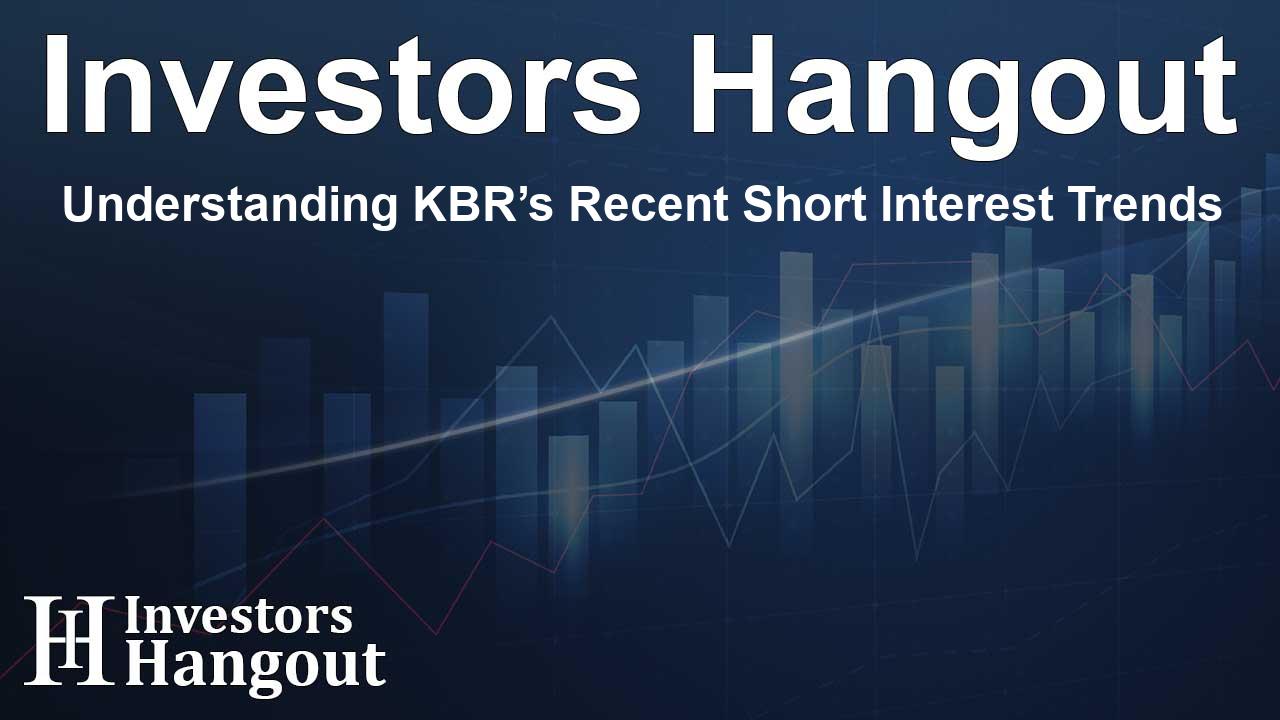Exploring KBR's Short Interest Dynamics
KBR has recently experienced a notable decrease in its short interest, with a reported short percent of float dropping by 28.34%. This reduction indicates a current short position of 1.98 million shares, which translates to about 1.77% of the total shares available for trading. Considering the daily trading volume, it appears that traders would need approximately 2.8 days to cover their short positions based on this data.
Importance of Short Interest
Understanding short interest is vital for investors and traders alike. Short interest represents the total number of shares sold short but not yet repurchased or closed out by traders. Short selling occurs when individuals sell shares they do not own in anticipation that the stock's price will decline. If the stock price falls, these traders can buy back the shares at a lower price to profit from the difference; however, if the price increases, they face potential losses.
The Sentiment Indicator
Tracking short interest helps in assessing the overall market sentiment towards a stock. A rise in short interest may indicate a bearish outlook from investors, reflecting pessimism about the stock's future performance. Conversely, a decrease in short interest could suggest increased confidence in the stock's potential, signaling a bullish sentiment.
Recent Trends in KBR's Short Interest
The latest data suggests that KBR's short interest has decreased, highlighting a shift in market sentiment. Although this trend does not guarantee a price increase in the near future, it is essential for traders to note that the number of shares being shorted has declined, which could reflect growing optimism among investors.
KBR's Performance Compared to Peers
Conducting a peer comparison is a common method for investors to evaluate a company’s performance relative to similar firms within the same industry. Peers are companies possessing comparable characteristics, such as market capitalization, industry type, and financial metrics. This comparative analysis can provide valuable insights into how KBR stacks up against its competitors.
Benchmarking Against Industry Norms
Based on the latest findings, KBR's average short interest as a percentage of float stands at 2.82%. This figure is lower than the average short interest among its peers, suggesting that KBR is experiencing less bearish sentiment compared to others in its industry. This insight is valuable for analysts and investors looking to understand KBR's market positioning.
Strategic Insights for Investors
Interestingly, rising short interest can sometimes indicate bullish opportunities for traders. When short interest increases, it can lead to a 'short squeeze,' where short sellers are forced to buy shares to cover their positions, often driving the stock price higher. This can create unexpected trading opportunities for astute investors watching the market closely.
Wrapping Up KBR’s Short Interest Landscape
In summary, KBR's short interest has seen a significant decrease, reflecting a shift in market sentiment. Understanding these fluctuations in short selling activity is crucial for making informed trading decisions. Investors should continuously monitor changes in short interest and consider them in their broader analysis of KBR and its market context.
Frequently Asked Questions
What does a decrease in short interest indicate for KBR?
A decrease in short interest typically reflects growing confidence in KBR's stock, indicating that fewer investors believe the stock price will decline.
Why is short interest important for traders?
Short interest provides insight into market sentiment and can indicate the potential for stock price movements, especially if short sellers need to cover their positions.
How does KBR's short interest compare to industry peers?
KBR's short interest is lower than the average of its peers, suggesting a more optimistic outlook among investors compared to its competitors.
Can increasing short interest be a positive sign?
Yes, increasing short interest can lead to potential short squeezes, where the stock price may rise sharply if short sellers are forced to buy back shares.
How often should investors check short interest?
It is advisable for investors to check short interest regularly as part of their overall market analysis to stay informed about potential trading opportunities.
About Investors Hangout
Investors Hangout is a leading online stock forum for financial discussion and learning, offering a wide range of free tools and resources. It draws in traders of all levels, who exchange market knowledge, investigate trading tactics, and keep an eye on industry developments in real time. Featuring financial articles, stock message boards, quotes, charts, company profiles, and live news updates. Through cooperative learning and a wealth of informational resources, it helps users from novices creating their first portfolios to experts honing their techniques. Join Investors Hangout today: https://investorshangout.com/
Disclaimer: The content of this article is solely for general informational purposes only; it does not represent legal, financial, or investment advice. Investors Hangout does not offer financial advice; the author is not a licensed financial advisor. Consult a qualified advisor before making any financial or investment decisions based on this article. The author's interpretation of publicly available data shapes the opinions presented here; as a result, they should not be taken as advice to purchase, sell, or hold any securities mentioned or any other investments. The author does not guarantee the accuracy, completeness, or timeliness of any material, providing it "as is." Information and market conditions may change; past performance is not indicative of future outcomes. If any of the material offered here is inaccurate, please contact us for corrections.
